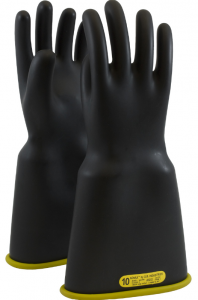
When it comes to electrical safety, proper inspection and maintenance of personal protective equipment are crucial. Electrical gloves are vital for protecting workers from electric shock and other electrical hazards. Regular inspection of these gloves is essential to ensure their effectiveness and longevity. While visual inspection is important, it may not always reveal all potential defects or weaknesses. This is where dielectric testing comes into play, providing a more in-depth analysis of the gloves beyond the surface.
Dielectric testing, also known as electrical insulation testing, is a method used to assess the integrity and insulation properties of electrical gloves. The test involves applying a high voltage to the gloves and measuring the amount of current that passes through them. By doing so, it can detect any defects or damage that may compromise the gloves' ability to provide adequate protection against electrical hazards. This type of testing is especially important for gloves that are regularly exposed to high voltage environments or harsh conditions.
There are two main types of dielectric tests commonly used for electrical glove inspection: the proof test and the dielectric breakdown test. The proof test involves applying a specific voltage to the gloves for a set period of time to check for any current leakage or insulation breakdown. This test is used to ensure that the gloves are able to withstand the maximum voltage they are rated for without failing. On the other hand, the dielectric breakdown test involves applying a voltage higher than the gloves' rated voltage to determine the point at which insulation failure occurs. This test helps to identify any weak spots or defects in the gloves that may lead to electrical shock or injury.
Dielectric testing is typically performed using specialized equipment, such as a dielectric test set or a hipot tester. These devices are designed to generate high voltages and measure the resulting current to evaluate the insulation properties of the gloves. It is important to follow the manufacturer's guidelines and industry standards when conducting dielectric tests to ensure accurate and reliable results. Regular calibration and maintenance of the testing equipment are also essential to ensure the integrity of the test results.
One of the key benefits of dielectric testing for electrical glove inspection is its ability to detect hidden defects that may not be visible through visual inspection alone. Cracks, cuts, or punctures in the gloves may not be easily noticeable on the surface but can significantly impact their insulation properties. Dielectric testing can help uncover these issues and prevent potential accidents or injuries in the workplace. By identifying and addressing any weaknesses in the gloves proactively, employers can ensure the safety and well-being of their workers.
Furthermore, dielectric testing can provide valuable data on the condition of the gloves over time. By conducting regular tests at scheduled intervals, employers can track any changes in the insulation properties of the gloves and determine when they need to be replaced. This proactive approach to maintenance can help prevent equipment failures and ensure that workers are always equipped with reliable and effective protective gear.
In conclusion, dielectric testing plays a crucial role in ensuring the safety and effectiveness of electrical gloves. By going beyond the surface and evaluating the insulation properties of the gloves, employers can identify hidden defects and weaknesses that may compromise their ability to protect against electrical hazards. Regular dielectric testing, in conjunction with visual inspection, is essential for maintaining the integrity of electrical gloves and preventing accidents in the workplace. By investing in proper testing equipment and following industry best practices, employers can provide their workers with the highest level of protection and promote a safe working environment.